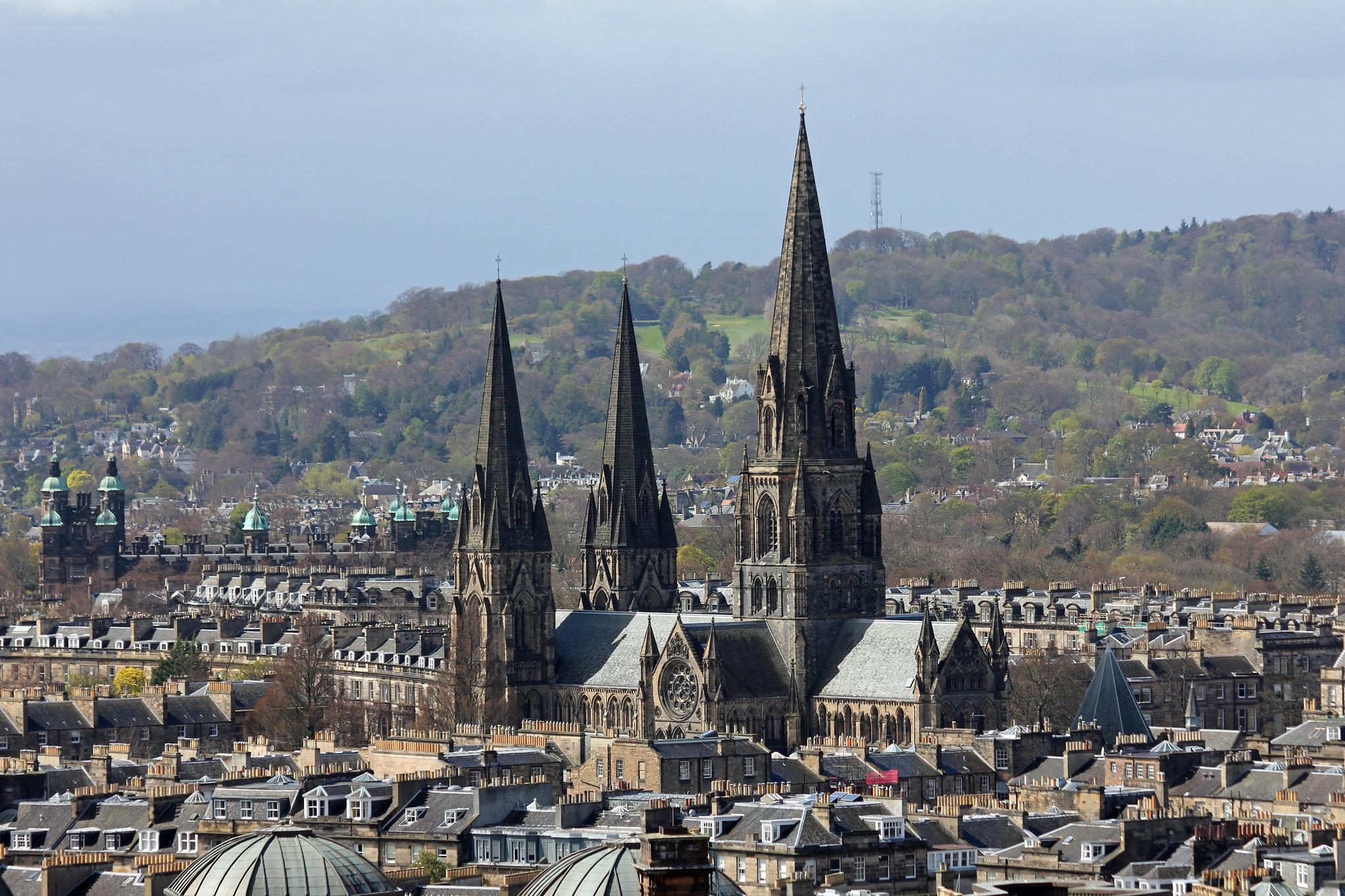St Andrew
Ravelston, City of Edinburgh
St Andrew’s church is rather special, and we in the parish are very proud of it. It is unusual as it is a wooden church, not stone like most in Edinburgh.

You are always welcome to visit this holy place in the heart of Edinburgh, with fine 19th century architecture and much to see inside and out.
Edinburgh, City of Edinburgh
At the revolution in 1688, the Scottish bishops and supporting clergy were ejected as non Jurors because they refused to swear an oath to William of Orange, choosing instead to support the supplanted King James; so the established church in Scotland was handed over to Presbyterian governance.
St Giles in consequence became once more the High Kirk of Edinburgh. The ejected Episcopalians, because of their Jacobite leanings, became subject to severe penal laws until 1792. After this they were free, largely to develop as they could. Gradually their obscure meeting houses gave place to churches, but for many poverty stricken years there were no cathedrals in the seven dioceses of Scotland. In particular, in the Diocese of Edinburgh other churches were used as the proCathedral until St Mary’s was completed in 1879. Barbara and Mary Walker left the whole of their property to the Episcopal Church in Scotland, thus enabling the building of a Cathedral which was to be dedicated to St Mary the Virgin, and also setting up trustees to endow the Cathedral and to set up grants in aid of other church work.
An architectural competition was arranged. Amid controversy, including accusations of plagiarism and favouritism from six competing designs, three from Scottish, three from English architects. That of the English Sir George Gilbert Scott was chosen with plans submitted under the clever anonymous motto, Auld Lang Syne. The foundation stone was laid on 21st May 1874 by the Duke of Buccleuch and Queensberry, and the building consecrated on 30th October 1879. The cost was £110,000, but rising wages forbad the completion of the Chapter House and western spires. The former was added in 1890 by the munificence of Hugh James Rollo WS, at a cost of £5,000, the latter by church people in memory of the founders during 1913-17 at a cost of £13,200.
Ravelston, City of Edinburgh
St Andrew’s church is rather special, and we in the parish are very proud of it. It is unusual as it is a wooden church, not stone like most in Edinburgh.
Dalmeny, City of Edinburgh
800+ years of worship, Dalmeny Kirk is a gem of Romanesque architecture, certainly the most complete in Scotland.
Edinburgh, City of Edinburgh
St John's is in the very heart of the city and no visit could be more rewarding than to this church with its stunning interior.